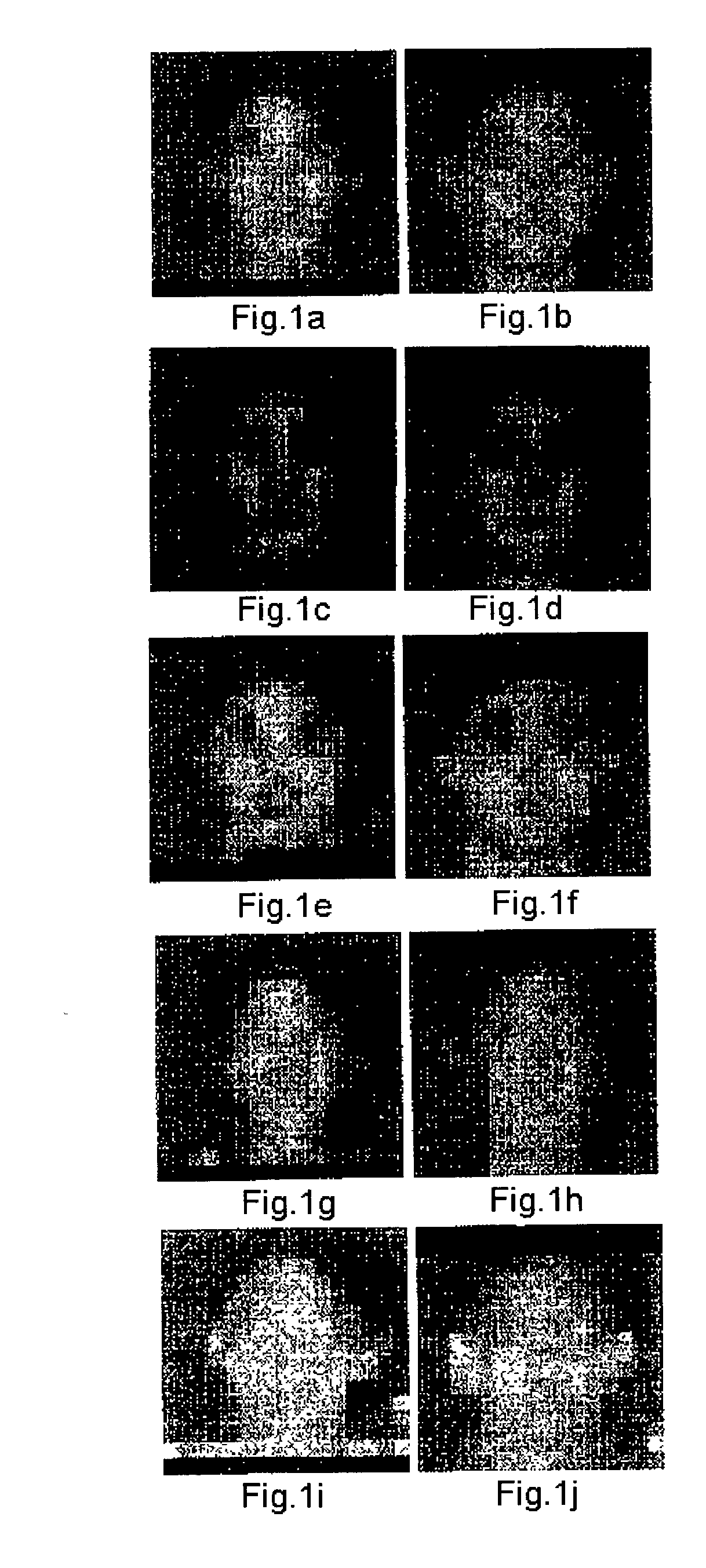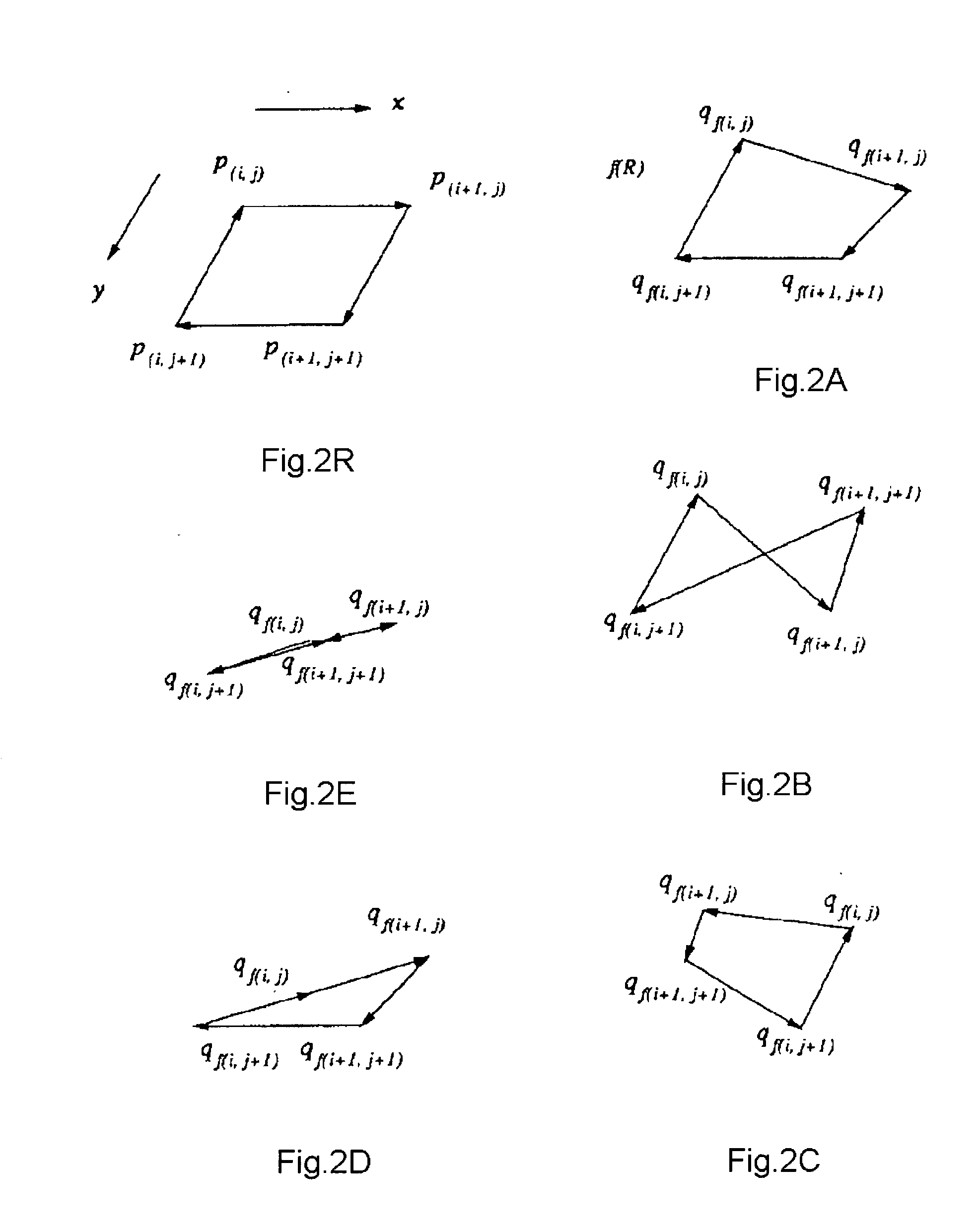Method and apparatus for coding and decoding image data
a technology of image data and coding method, applied in the field of image data processing technology, can solve the problems of preventing the compression rate from being improved, hard to predict the evolution of the digital culture, and degrading image quality
- Summary
- Abstract
- Description
- Claims
- Application Information
AI Technical Summary
Problems solved by technology
Method used
Image
Examples
first embodiment
[0242] FIG. 18 shows a first image I1 and a second image I2 which serve as key frames, in which certain pixels p.sub.1(x.sub.1, y.sub.1) and P.sub.2(x.sub.2, y.sub.2) correspond therebetween. The correspondence of the pixels may be obtained using the base technology.
[0243] Referring to FIG. 19, a mesh is provided on the first image I1 and corresponding positions of lattice points are shown on the second image I2. Now, a polygon R1 on the first image I1 is determined by four lattice points A , B, C and D. This polygon R1 is called a "source polygon." As has been shown in FIG. 18, these lattice points A , B, C and D have respectively corresponding points A', B', C'and D' on the second image I2, and a polygon R2 formed by the corresponding points is called a "destination polygon." In this embodiment, the source polygon is generally a rectangle while the destination polygon is generally a quadrilateral. In any event, according to the present embodiment, the correspondence relation betwe...
second embodiment
[0258] A second embodiment, deals with a problem of erroneous correspondence at the time of generation of the intermediate image. Initially, suppose that there are two key frames captured or photographed by a camera. If the two field-of-view spaces of the camera coincide, the generated intermediate image or images will be almost natural. However, when the camera pans (namely, changes the viewing direction) or the camera zooms in or out (namely, changes magnification while the viewing direction is kept intact), there will be points that are captured in one of the two key frames but that are not in the other key frame. Such points will be called "correspondence incapable points" hereinafter. As described above, a "correspondence incapable point" appears, for example, when a surrounding landscape is photographed panoramically while rotating the camera or when a distance view is magnified by zooming in the camera, and so forth.
[0259] In order to solve the possible mismatching problem ca...
PUM
 Login to View More
Login to View More Abstract
Description
Claims
Application Information
 Login to View More
Login to View More - R&D
- Intellectual Property
- Life Sciences
- Materials
- Tech Scout
- Unparalleled Data Quality
- Higher Quality Content
- 60% Fewer Hallucinations
Browse by: Latest US Patents, China's latest patents, Technical Efficacy Thesaurus, Application Domain, Technology Topic, Popular Technical Reports.
© 2025 PatSnap. All rights reserved.Legal|Privacy policy|Modern Slavery Act Transparency Statement|Sitemap|About US| Contact US: help@patsnap.com



